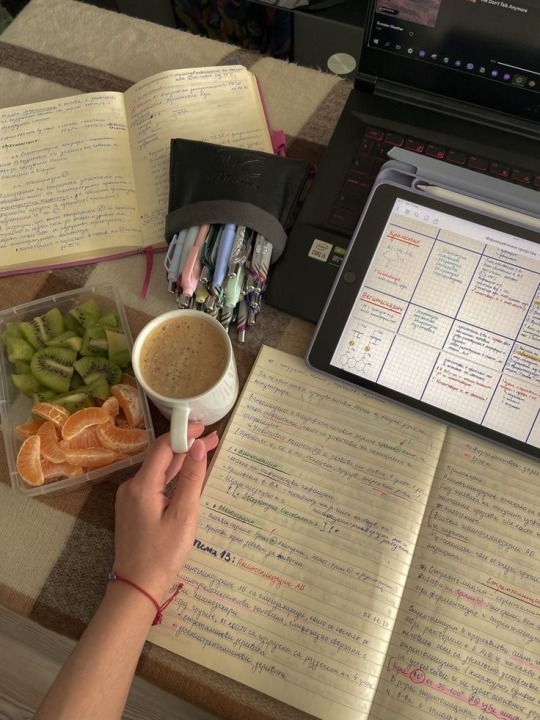Text
I’m cooked 🫡🫡
#college life#student#study#studying#university#student life#study space#study hard#exam stress#college#final exams#fyp#funny pics#funny jokes#semester#students#stress
9 notes
·
View notes
Text
"UNDER THE SEA"😂😂
#college life#student#study#studying#university#student life#study space#study hard#exam stress#college#semester#students#stress#final exams#fyp#funny pics#funny videos#finals
2 notes
·
View notes
Text
The Importance of Planning in Essay Writing
In the landscape of academic writing, the significance of planning cannot be overstated. It serves as the cornerstone for constructing a well-structured and persuasive essay. Through careful planning, writers can create a clear and coherent argument, ultimately enhancing the quality of their work.
Understanding Your Topic:
Planning is essential as it allows writers to dissect the essay prompt, gaining a comprehensive understanding of the requirements. Breaking down the question into manageable parts enables a deeper comprehension, ensuring that the essay remains focused and avoids tangential discussions.
Organizing Thoughts:
Furthermore, planning assists in organizing thoughts and ideas in a logical manner. By establishing a coherent structure, writers can facilitate smooth transitions between points, providing readers with a cohesive narrative that is easy to follow.
Time Management:
Effective planning also aids in time management by providing a roadmap for the writing process. By allocating specific timeframes for each section of the essay, writers can avoid the pitfalls of procrastination and last-minute rushes, thus ensuring that sufficient attention is given to every aspect of the paper.
Facilitating Research:
Lastly, planning streamlines the research process by guiding writers towards relevant sources and information that support their argument. With a well-defined plan in place, researchers can efficiently gather the necessary evidence without wasting time on irrelevant materials.
In conclusion, planning serves as the linchpin of successful essay writing. By enhancing understanding, promoting organization, aiding in time management, and facilitating effective research, it lays the foundation for a well-written and compelling essay. Thus, it is imperative for writers to devote adequate time to the planning phase, as a well-planned essay invariably translates to a well-executed one.



#college life#student#study#studying#university#student life#study space#study hard#exam stress#college#my wriitng#writer problems#adult work#essay writing#bloom#semester#students#stress
8 notes
·
View notes
Text
Oh, how wonderful it is 🥹🥹

#college#college life#student#study#studying#university#student life#study space#study hard#exam stress#final exams#funny jokes#flexibility#fyp#funny pics#funny videos#semester#my wriitng#writer problems#adult work#essay writing#writers on tumblr#writing
3 notes
·
View notes
Text
“University years are the best” they said 🫠😫

#college life#student#study#studying#university#student life#study space#study hard#college#exam stress#final exams#funny jokes#fyp#funny videos#semester#students#flexibility#my wriitng#writer problems
6 notes
·
View notes
Text
I used to be a straight A student now I'm celebrating a B- 🥲
#college life#student#study#studying#university#student life#study space#study hard#college#exam stress#final exams#fyp#semester#students
5 notes
·
View notes
Text
“why would you say that?”🥲🤣🤣
#college life#student#study#studying#university#student life#study space#study hard#college#exam stress#final exams#funny jokes#fyp
1 note
·
View note
Text
How to Write a Compare and Contrast Essay
In the realm of essay writing, mastering the art of comparison and contrast is a valuable skill, requiring clarity and coherence. This essay delves into the importance of these elements while offering a step-by-step guide to crafting a compelling compare and contrast essay. Beyond surface-level comparisons, this form of writing demands a deeper understanding of the interconnectedness between subjects.
Understanding the Assignment:
The first step is comprehending the assignment's requirements. By grasping the purpose of a compare and contrast essay, one can discern the nuances between subjects, highlighting both similarities and differences effectively.
Choosing Your Subjects:
Selecting suitable subjects is crucial. They must share enough common ground to warrant comparison yet possess distinct qualities to facilitate meaningful contrast.
Brainstorming and Organization:
Brainstorming about chosen subjects aids in identifying pertinent points for comparison and contrast. Organizing these points systematically lays the groundwork for a coherent essay structure.
Developing Your Thesis:
Crafting a robust thesis statement serves as the essay's backbone, guiding subsequent arguments and articulating the writer's perspective clearly.
Writing the Essay:
Embarking on the writing process involves composing an engaging introduction, followed by a detailed exploration of comparative points in the body, and culminating in a conclusive summary that reinforces the thesis statement.
Review and Revision:
Thoroughly reviewing and revising the essay ensures clarity, consistency, and completeness. This stage is pivotal in refining the essay's coherence and effectiveness.
Writing a compare and contrast essay is a rewarding endeavor, requiring meticulous planning and execution. By adhering to the principles of clarity and coherence, one can craft an essay that not only informs but also captivates the reader, showcasing analytical prowess. Remember, the devil—and the beauty—lies in the details.



#college life#student#study#studying#university#student life#study space#study hard#college#exam stress#semester#students#stress#final exams#funny jokes#fyp#finals#my wriitng#writer problems#adult work#essay writing#writing#writers on tumblr
6 notes
·
View notes
Text
Best way😂😂

#college life#student#study#studying#university#student life#study space#study hard#exam stress#college#final exams#funny jokes#semester#students#stress#my wriitng#writer problems#essay writing#writers on tumblr#writing
2 notes
·
View notes
Text
I’m cooked 🥲😭😭

#college life#student#study#studying#university#student life#study space#study hard#exam stress#college#semester#students#stress#final exams#fyp#fypfypfypfypfypfypdypfypfypfypfypfypfyfpfyfpfyp#my wriitng#writer problems#adult work#essay writing#writers on tumblr
4 notes
·
View notes
Text
Who does that? 🤣🤣
#college life#student#study#studying#university#student life#study space#study hard#exam stress#college#final exams#funny jokes#semester#students#funny stuff
4 notes
·
View notes
Text
second try 🥹🥲
#college life#student#study#studying#university#student life#study space#study hard#exam stress#college#final exams#funny jokes#fyp
1 note
·
View note
Text
Techniques for Writing a Descriptive Essay
In crafting a descriptive essay, the writer's goal is to paint a vivid picture in the reader's mind using sensory details and evocative language. By engaging the senses, the writer transports the reader to the scene being described, creating a memorable experience. In this essay, we'll explore four key techniques for achieving this immersive effect.
Utilize Sensory Language:
Describe the scene using words that appeal to the five senses: sight, sound, touch, smell, and taste. By incorporating sensory details, such as the vibrant colors of a sunset, the gentle rustling of leaves, the soft texture of a silk scarf, the aroma of freshly baked bread, or the tangy flavor of ripe strawberries, the writer brings the setting to life for the reader.
Employ Figurative Language:
Enhance the descriptive quality of the essay by incorporating similes, metaphors, and personification. Comparisons such as "the clouds hung like cotton candy in the sky" or "the old house groaned with memories" evoke powerful imagery and deepen the reader's connection to the scene.
Use Vivid Imagery:
Paint a clear picture by providing specific details and vivid imagery. Rather than stating "the garden was beautiful," describe the scene in detail, mentioning the colorful array of flowers, the lush greenery, and the delicate petals swaying in the breeze. By focusing on precise details, the writer captivates the reader's imagination and creates a rich sensory experience.
Organize Descriptions Effectively:
Structure the essay in a logical manner, organizing descriptions in a way that enhances coherence and flow. Whether following a chronological sequence, spatial arrangement, or thematic progression, ensure that each description builds upon the previous one, guiding the reader through the scene with clarity and purpose.
In conclusion, mastering the art of descriptive writing requires careful attention to detail, a command of language, and a willingness to engage the reader's senses. By employing techniques such as sensory language, figurative language, vivid imagery, and effective organization, writers can create essays that resonate with readers and leave a lasting impression. Through the power of words, descriptive essays have the ability to transport readers to distant lands, evoke powerful emotions, and ignite the imagination.



#college life#student#study#studying#university#student life#study space#study hard#exam stress#college#final exams#fyp#funny videos#funny jokes#semester#students#stress#funny stuff
6 notes
·
View notes
Text
Let’s gooo!! 😼😼

#college life#student#study#studying#university#student life#study space#study hard#exam stress#college#final exams#funny jokes#fyp#flexibility#semester#students
8 notes
·
View notes
Text
😅😅😅

#college#college life#student#studying#university#student life#study space#study hard#exam stress#study#final exams#funny jokes#fyp#semester#students#stress
3 notes
·
View notes
Text
Time for a cheeky nap 🥹😭😭
#college life#student#study#studying#university#student life#study space#study hard#exam stress#college#final exams#funny jokes#fyp#funny videos#funny stuff#finals#semester#students
5 notes
·
View notes
Text
That’s why I have to go alone 😭🥹
#college life#student#study#studying#university#student life#study space#study hard#exam stress#college#final exams#funny jokes#fyp#funny videos#semester#students#stress
2 notes
·
View notes